Quick Answer:
Yes, one person can sell a car even if two names are on the title. Such titles have joint ownership, so you will need to get the co-owner’s consent to finalize the title transfer and complete the sale.
The process can vary depending on your specific situation. For instance, if a co-owner passes away or the car is still being financed, the steps involved in the sale may differ from the standard procedures. Check different situations and solutions below.
Key Takeaways:
- Title Conjunctions Matter: If the car title uses “OR” or “AND/OR” between owners’ names, one person can sell the car. For “AND,” both must consent and sign.
- Selling Process: Consent from both parties is needed. Gather necessary documents like the title and ID. For special cases (death, divorce, financed car), additional steps are required.
- Finalizing the Sale: Complete the title transfer at the DMV. If a co-owner can’t be present, use Power of Attorney or remove them from the title with appropriate DMV procedures.
Best for Older & Damaged Cars

Buys used, damaged or junk cars
Free tow and no hidden fees
Pays by ACH trasfer or check
Top Pick for Junk Cars

Free, no-obligation cash offers
Offers free paperwork service
Pays on the spot upon pick up
How I Sold Our Car With Two Names On The Title
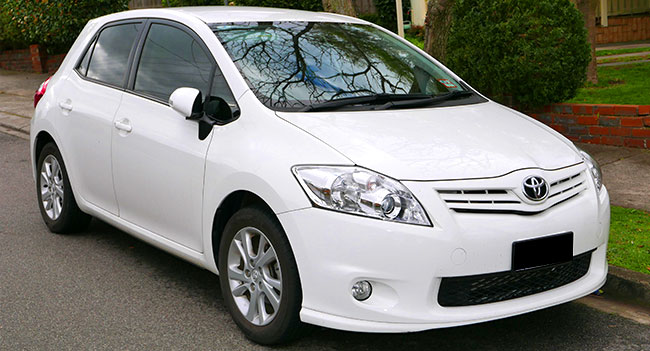
A decade ago, my wife and I decided to purchase a 2012 Toyota Corolla together, and adding our names to the title seemed like a wise choice as it resulted in lower insurance payments.
However, when my wife transitioned to remote work, we mutually agreed to sell the car in order to allocate the funds towards a much-needed garden renovation project.
Given our decision to sell the car, I considered both selling the car privately and to the dealership. Initially, I listed our car on eBay Motors and Autotrader for $3200. In the upcoming month, I received several calls, but only one person was interested in a test drive, which I could not arrange as I needed to take my kids to baseball training.
As I understood it might take a while to sell a car, I decided to try online car-buying services such as Peddle, Wheelzy and Carbrain.
Considering our car’s age and the prevailing market prices for a 9-year-old Toyota Corolla, Peddle offered the best deal for $2805, and it seemed more than reasonable.
Peddle only required me to provide the car title, signed by both me and my wife, my ID card and the location of the vehicle; they handled all other necessary paperwork for me.
The car was picked up from my driveway within 48 hours, and we were paid full price right on the spot.
Understand the Conjunctions
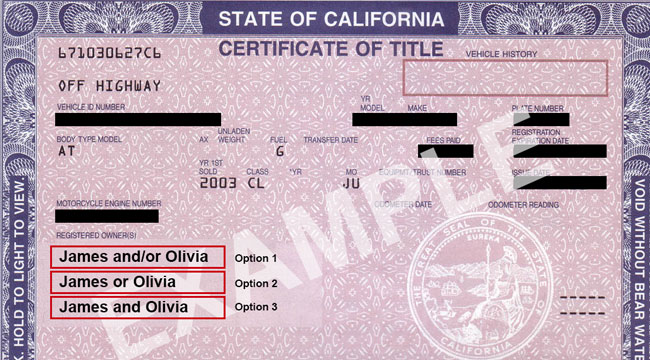
If there are two names on your title, it signifies that both individuals are co-owners of the asset, meaning both have equal rights and responsibilities.
The only difference is either both owners need to be present and sign the ownership transfer at DMV, or the involvement of just one owner is sufficient.
Conjunction between the two names on the title’s “owner name” field can be “AND”, “OR”, “AND/OR”, for example:
- “James and/or Olivia
- “James or Olivia”
- “James and Olivia”
Check the conjunction added to your title and compare it with this table to see if you can sell the car alone:
| Conjunction | To transfer title | Presence required |
|---|---|---|
| AND/OR | One co-owners signature | Only one co-owner |
| OR | One co-owners signature | Only one co-owner |
| AND | Both co-owners signature | Both co-owners |
In cases with an “AND/OR” or “OR” conjunction on the title, one person can sell the car. However, it is crucial to obtain the permission of the other co-owner, as both individuals hold equal rights to the vehicle.
This ensures that the selling process is conducted with both co-owner’s proper consent and acknowledgment. Conjunction between the names also does not put one above the other, it only indicates the need for presence when transferring ownership.
Reasons For Two Names On a Car Title
There are a few main reasons people choose to have joint ownership:
- Possible insurance advantages – some insurance companies offer lower rates and additional premiums for joint owners, especially if you have a good driving record.
- Shared ownership rights – both owners have equal rights, so this is a way to have a common ground and avoid any misunderstandings in the future.
- Probate-free ownership transfer in case of death – in most states, ownership is automatically transferred to the survivor in case of co-owner death.
- Split costs – equal rights mean equal responsibilities, which is a good way to share car repair and insurance expenses.
In most cases, joint ownership is an option for married couples but also can be used for parent-child or non-family related individuals.
Selling Jointly Owned Car: Standard Procedure
Step1: Get the Co-Owners Signature

When you have joint ownership, and both parties agree to sell the car, the initial step to proceed with the sale independently is obtaining the co-owners consent.
The signature of the co-owner, which won’t be present at DMV when completing the procedures, is needed to prove the permission to sell. Without their signature, the DMV will not authorize the completion of the sale.
Remember that regulations and procedures for selling cars vary from state to state. To ensure a seamless experience, I recommend checking the specific requirements and paperwork you will need to sell with your local DMV.
Step 2: Gather Required Documents
Besides the required Certificate of Title and your ID or driver’s license, you might need to provide additional paperwork to complete the sale.
Requirements vary depending on the state, but you might need the following:
- Valid registration
- Emissions test documents
- Bill of sale
Additional documents that might help to close the deal:
- VIN Check
- Service records
- Owner’s manual
Step 3: Complete Title Transfer
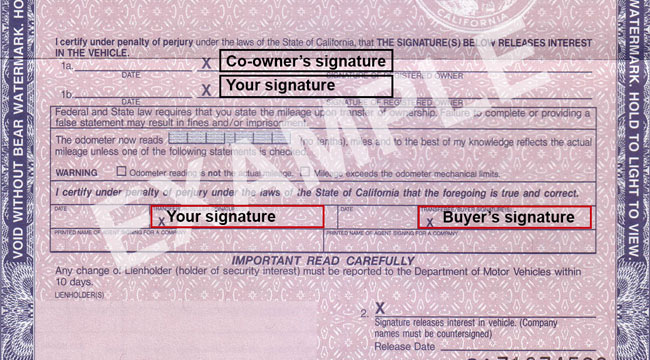
After the co-owner signed the title and you gathered the required paperwork, you can handle the remaining steps of the process independently.
When transferring the title at DMV, you will need to provide a signed car title with odometer readings and sale price, as well as your ID or driver’s license.
Some states require the seller to sign a car title in front of a notary public, so only a co-owners signature should be on the title before you arrive at DMV.
Additionally, before you and your buyers sign the title, you will be requested to fill out an application for title transfer and registration form with all your personal information. In filling these documents, only one of the co-owner’s signatures is required (if the title conjunction allows the co-owners absence).
Step 4: Sign the Release of Liability Form
After the title transfer, it is necessary to sign the Release of Liability form. This is an agreement between two parties in which one party (buyer) waives the right to hold another party (seller) responsible for potential damages or injuries.
If the Release of Liability is not signed, you can be accounted for paying fees or penalties, such as parking ticket fines, even though the car no longer belongs to you.
Step 4: Cancel Insurance
After completing the sale and title transfer, you need to cancel your insurance. Make sure to cancel it only after transferring the ownership, as legal responsibility for the vehicle remains with you until that point.
Selling Jointly Owned Car: Financed Car
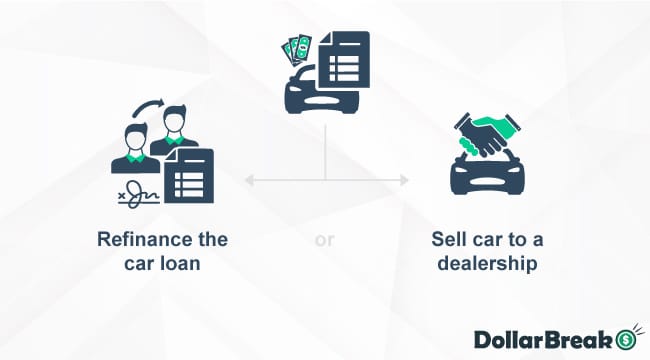
If you still have an unpaid lease or loan, technically, you do not own the car, and the lender is the lienholder. In this case, you won’t be able to sell a car privately unless you pay off the debt completely.
However, you have a few options:
Option1: Refinance the Loan
Refinancing the loan presents an opportunity to change the list of co-debtors, meaning one of the “co-owners” could apply alone.
Whether this option is suitable largely hinges on a person’s credit score and income.
Hence, the best way to determine possible options and procedures is to consult with your bank or leasing company about your situation.
Option 2: Sell to Dealership
If you can’t refinance your loan, selling the vehicle to the dealership is the best option.
As Peddle does not buy financed cars, I suggest trying Wheelzy. It is one of the well-trusted companies that buy used financed cars without paying them off.
Advantages of selling a car to a dealership like Wheelzy:
- You will get an instant cash offer (within 30 minutes)
- The dealership manager will take care of all the necessary paperwork for you.
- Free car pickup within 24-48 hours
Another dealership to consider is CarBrain. They also allow the sale of a financed car, especially if it is in less-than-perfect condition.
Selling a car to CarBrain will take only a few minutes, and they will send a driver to your location according to the agreed schedule within 48 hours.
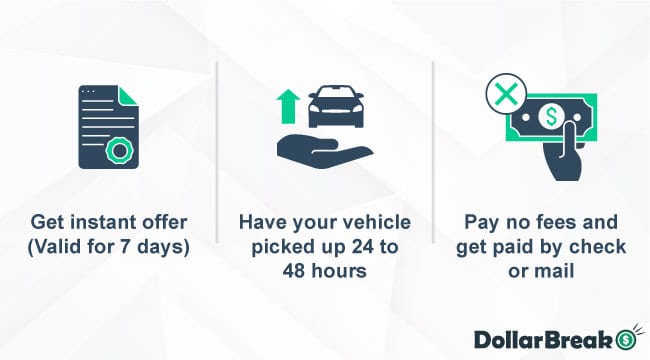
Selling Jointly Owned Car: After Co-Owner’s Death
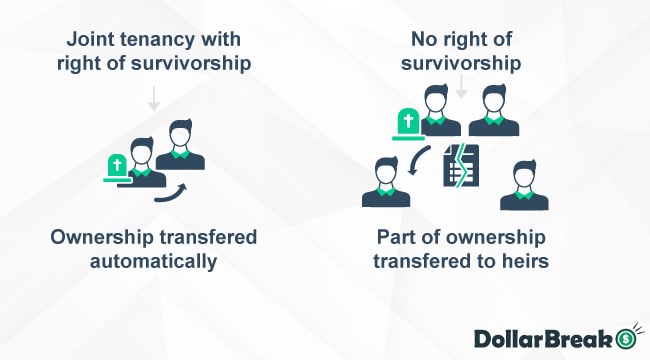
The process in such instances varies significantly across states. For example, in Oregon, if a car title bears two names and one of the owners passes away, the surviving individual automatically inherits full ownership of the vehicle.
Contrastingly, in Kentucky, such an automatic transition of full ownership occurs exclusively if the co-owners share a marital relationship.
In many states, though, you can dictate the nature of joint ownership by appending “in joint tenancy with right of survivorship” to the title owners’ line. This ensures that ownership is seamlessly transferred to the surviving owner, bypassing the need for probate.
Without the aforementioned joint tenancy designation, if one of the owners passes away, their shares in the vehicle typically transfer to their heirs. This means you will need to obtain consent from the heirs to sell the car or transfer the title ownership to your name.
Once a name has been removed from the title, it’s crucial to inform your insurance company of this change. It’s essential to ensure the name on the title and insurance policy align perfectly.
Selling Jointly Owned Car: In Case of the Divorce
When a vehicle is purchased during a marriage, it’s typically deemed as marital property, making both spouses equal owners regardless of the name on the title. Consequently, both signatures are required for any sale, even though one person can complete the sale.
The process of selling a car with two names on the title in case of divorce is the same as in standard procedure – you will need to get the consent of the co-owner.
Selling Jointly Owned Car: If Co-Owner Can’t Be Present
If ” AND ” exists between the owner’s name in the title, both individuals must be present at DMV to transfer the title to the buyer. But if there is no possibility to ensure the presence of both owners, there are 2 options:
Option 1: Power of Attorney
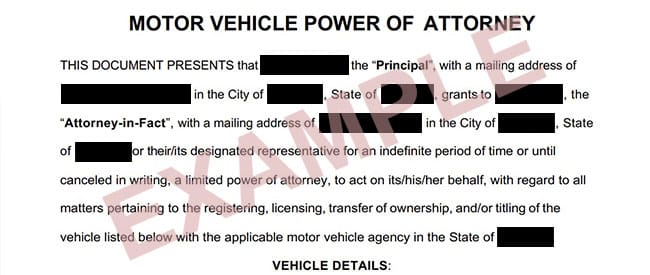
The co-owner can sign a power of attorney and legally allow you to act on their behalf. With this document, you can sign the required documents at DMV independently.
DMV still requires a signed car title as an act of consent.
Option 2: Removing the Co-owner from the Title

If you need to remove one of the co-owners’ names from the title, they need to complete and sign the form on the back of the car’s title that transfers ownership.
Usually, both owners’ names must be listed as the seller, and the person who wants to remain on the title must sign the “buyer’s” section.
Next, you should visit DMV or contact them by phone to check if they can transfer the title by mail.
It can take up to several weeks to complete the title transfer.
People Also Asked
Do both parties have to be present to transfer a car title?
If the car title has a “AND” or slash (/) between the co-owner’s name, both individuals must be present to transfer the title.
If there is “OR”, “AND/OR” between the names, the presence of only one individual is enough, but you must provide the consent of the co-owner. This can be done by signing the title.
Can I trade in a car with two names on the title?
Yes, you can. Dealership companies, such as CarBrain, Wheelzy or Carvana, will help you take care of all the paperwork. Additionally, you will get an instant cash offer and a free car toss within 24-48 hours.
However, a co-owner’s consent is also required upon selling.
What’s the drawback of joint ownership of a car?
Individuals commonly choose joint ownership to avoid probate and ensure equal rights to the asset.
It is particularly popular among married couples, especially if the car was acquired during the course of their marriage.
Pros of joint ownership:
- Lower insurance fees
- Ensures equal rights
- No-probate inheritance
Cons of joint ownership:
- Shared responsibility
- Credit exposure (when co-borrowing)
- Both owners must consent when selling.
What paperwork is needed to sell a car with two names on the title?
The list of required paperwork differs from state to state, so it is best to check with your local DMV, but in general, the most important documents you will need are:
- Title with co-owner signature
- Your driving license or ID
- Odometer readings
- Sale price
Some states might require:
- Emission test certificate
- Bill of sale
- Registration





